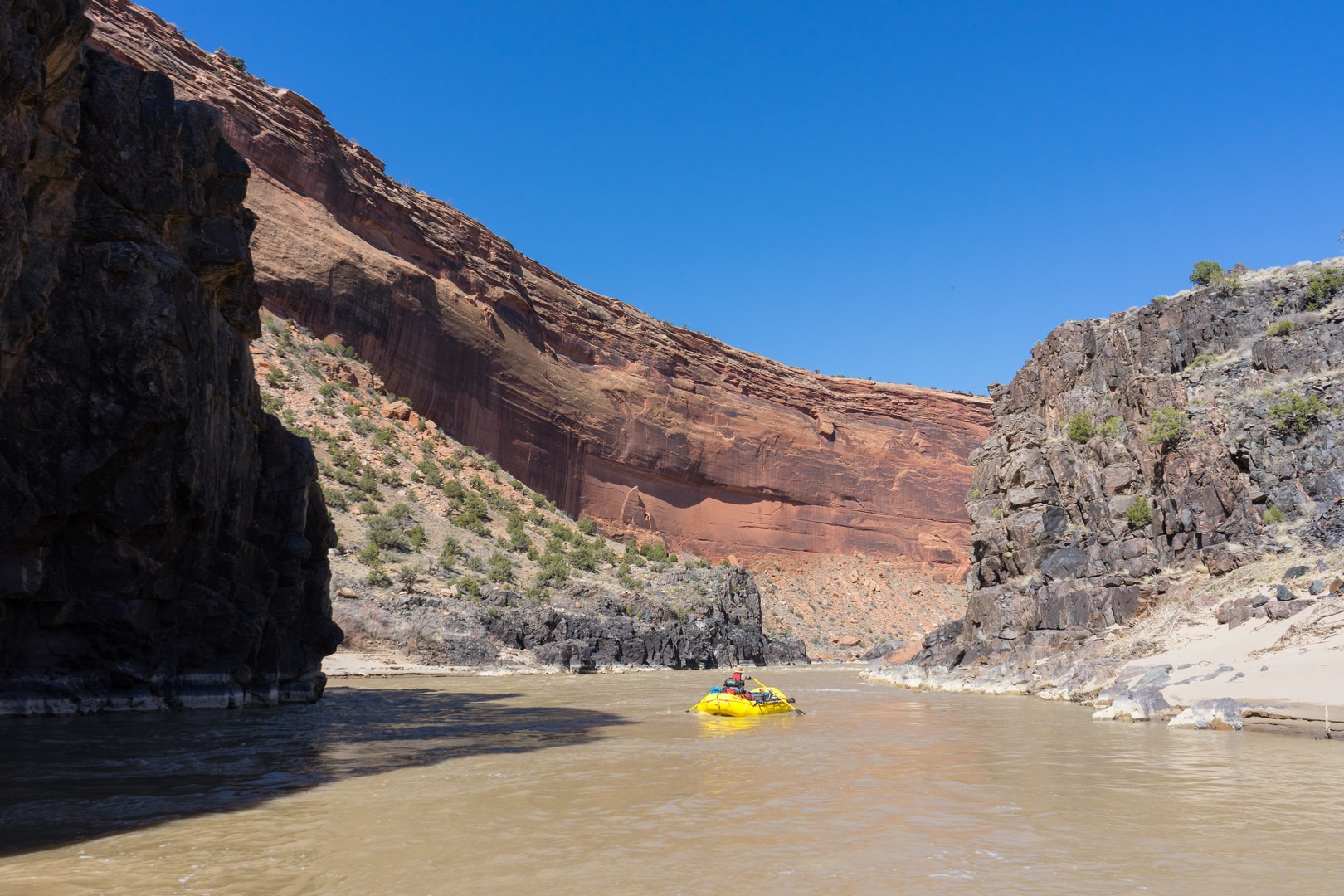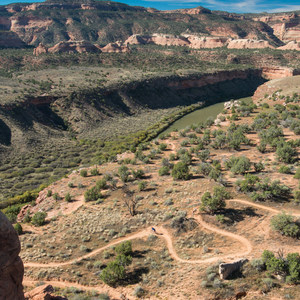Westwater Canyon is one of the classic whitewater runs on the Colorado River, and indeed in the whole of the Southwest. Its churning pool-drop rapids and black-rock gorge are like a miniaturized version of what you find in the Grand Canyon. Unlike the Grand, however, Westwater is much simpler logistically because of its short distance and the relative ease of obtaining permits. Its a trip of only 17 miles that is usually done as a one-nighter, but it can also be done in a day.
Permits are required through the Bureau of Land Management. You must adhere to certain regulations for camping, waste disposal, whitewater safety, treatment of historical artifacts, etc. Also, boaters must pass a ranger inspection upon launch. Commercial trips are also available through a few different companies, and these companies take care of all the planning and equipment for you. Private boaters must be prepared and skilled enough to handle Class III-IV whitewater in a remote desert gorge.
The river starts out mellow, meandering through expansive desert and Utah redrock cliffs. It enters a dramatic gorge of dark-colored gniess after only a few miles, and then the rapids begin. In general they build in difficulty as you get deeper in the canyon, culminating with Skull, the infamous Class III+ (Class IV at higher water levels). The line is not especially difficult, but scouting can be tough because it requires catching an eddy just above the rapid on river left, and the main line requires entering on the right. Most other rapids in the gorge are straightforward read-and-run wave trains, but some hold technical moves and hidden hazards, all of which vary with water level. Most are difficult to scout or recover from flips afterward because eddies are small and the canyon walls are vertical. For these reasons, first time boaters in Westwater should have solid Class IV skills or be accompanied by someone who knows the run well, even though most rapids are no more than Class III.
Aside from the whitewater, Westwater features some incredible geology and evidence of human history. The gneiss at river level is some of the oldest exposed rock on the continent, and the transition to red sandstone more typical of the Utah desert above represents hundreds of millions of years of unrecorded time in the geologic record. Side hikes from the river can reveal Native American and later settler's habitations and artifacts, not to mention incredible vistas from higher in the canyon's layers.
The gorge ends as suddenly as it begins, and the black walls give way to more sandstone cliffs and open desert. The scenery here is even better than the stretch above the gorge, however. The river moves lazily for a few more miles until Cisco Boat Launch, which is the take out for Westwater. To add more nights to this trip you can combine with Ruby Horsethief (Class I-II) above or Professor Valley (Class I) to the Moab Daily Section (Class II-III) below.
Notable Rapids:
- Wild Horse, Class II, mile 4.7
- Little Dolores Confluence (Little D Hole), Class II, mile 7.7
- Funnel Falls, Class III, mile 9.9
- Skull, Class III+, mile 10.8
- Bowling Alley, Class III, Mile 11.1
- Sock It To Me, Class III, Mile 11.3











Comments
Sign In and share them.